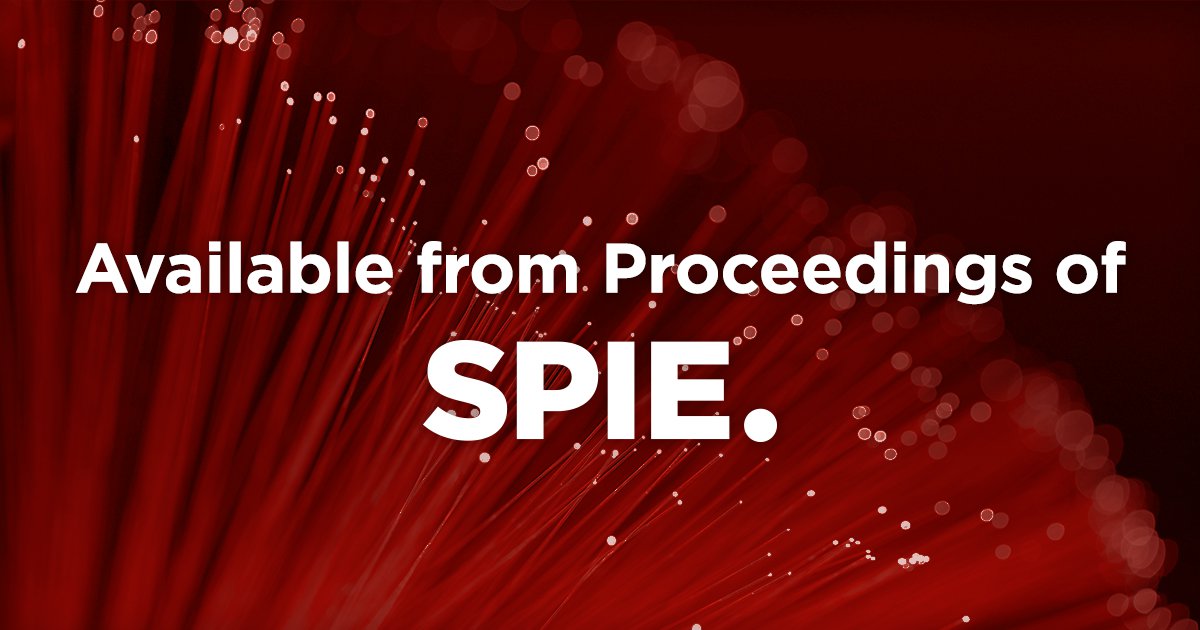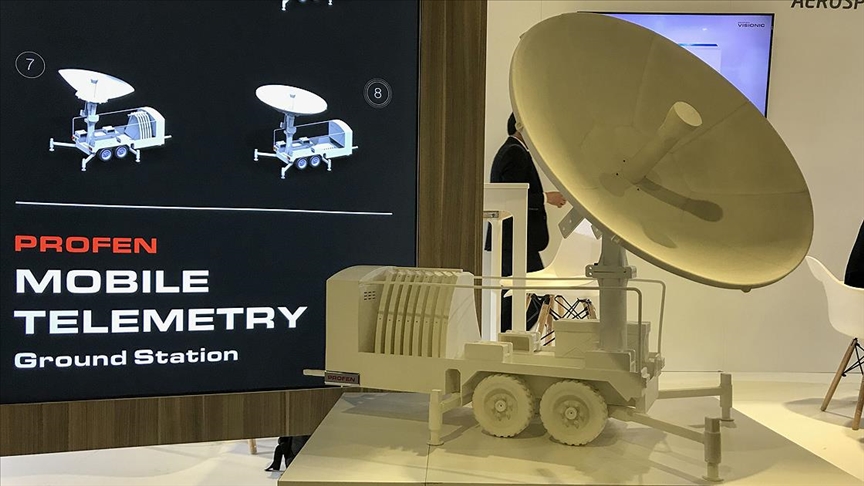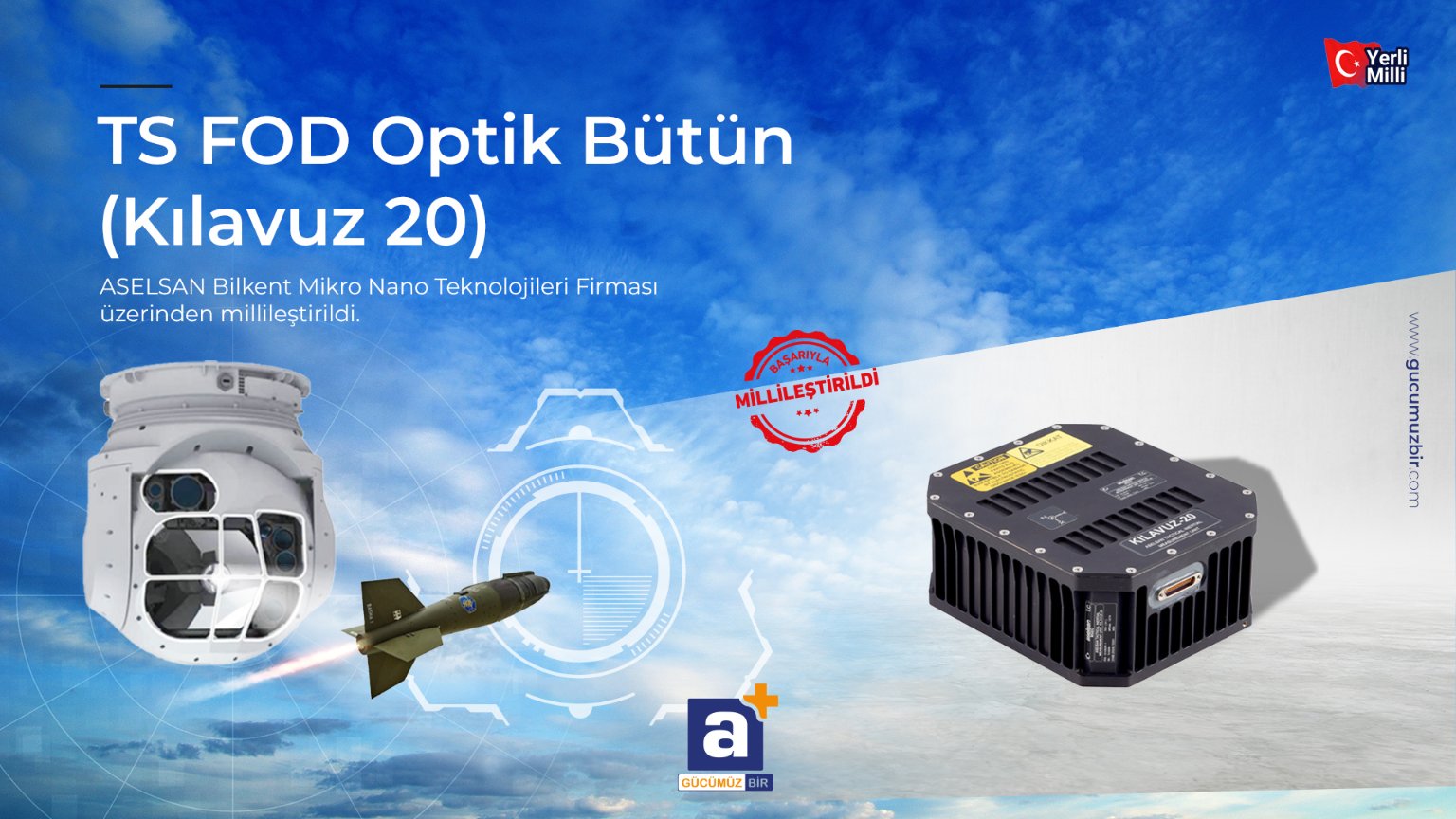But it was said that hisar uses rf proximity sensorYITAL milestones
View attachment 30433
HISAR Laser Proximity Sensor detectors compared to German's detector that they won't sell
View attachment 30436
BTW laser proximity sensor for HISAR is co-developed with Thales UK - Belfast
You are using an out of date browser. It may not display this or other websites correctly.
You should upgrade or use an alternative browser.
You should upgrade or use an alternative browser.
High efficiency nanohole based immersion metalens for light concentration
6 August 2021 ASELSAN
Abstract
Design and performance analysis of a high efficiency, nanohole based, polarization-insensitive, all-dielectric, immersion metalens is presented, which is to be monolithically integrated into a backside illuminated HgCdTe based photodetector with CdZnTe (4%) as the substrate material for MWIR (3-5 μm) applications. Although HgCdTe based IR imaging dominate the high-performance end of the market, enhancing the signal-to-noise ratio (SNR) performance is still one of the challenges. This is typically dealt with either by improving the quantum efficiency (QE) with the employment of AR surfaces and photon trapping schemes or by decreasing the noise level with a reduction in detector volume. Decreasing either the thickness or the area of the detector, which comes with a performance degradation in QE in return, does the volume reduction. Nevertheless, the reduced QE can be recovered through light concentration with the employment of microlenses in the case of reduced area, which is typically realized with curved lenses presenting curve formation and packaging related issues. These issues can be overcome with the utilization of lithography-compatible metalenses carved into the substrate material. Thus, in this study, a nanohole based array of 40×40 is optimized to be monolithically integrated into CdZnTe (4%) substrate with a placement period of 1.0μm, a depth of around 4.9μm in order to construct a metalens structure with a numerical aperture of 0.63, and operation wavelength of 4.0μm. The nanohole width changes within a range of 0.35μm to 0.83μm in order to provide 2π phase coverage. Single layer of SiO2 based antireflective surface is introduced to the design in order to enhance the focusing efficiency, which is determined to be around 91%.

High efficiency nanohole based immersion metalens for light concentration
Design and performance analysis of a high efficiency, nanohole based, polarization-insensitive, all-dielectric, immersion metalens is presented, which is to be monolithically integrated into a backside illuminated HgCdTe based photodetector with CdZnTe (4%) as the substrate material for MWIR...www.spiedigitallibrary.org
Poster link
Main article
SPIE-OP21N-659f6b9d-4565-eb11-814a-005056be4d05
MediaFire is a simple to use free service that lets you put all your photos, documents, music, and video in a single place so you can access them anywhere and share them everywhere.www.mediafire.com

117952C
MediaFire is a simple to use free service that lets you put all your photos, documents, music, and video in a single place so you can access them anywhere and share them everywhere.www.mediafire.com
KEYWORDS
Photodetectors,
Signal to noise ratio,
Absorption,
Microlens,
Mid-IR,
Quantum efficiency,
Refractive index
Combat-Master
Baklava Consumer
Tripple-Mode 'counter-counter measure' IR Seeker research at Roketsan;

Could we see this on ATMACA-KKK?

Could we see this on ATMACA-KKK?
-Sir why our seekers cost to much?Tripple-Mode 'counter-counter measure' IR Seeker research at Roketsan;
View attachment 30541
Could we see this on ATMACA-KKK?
View attachment 30543
+uhm..
Tripple-Mode 'counter-counter measure' IR Seeker research at Roketsan;
View attachment 30541
Could we see this on ATMACA-KKK?
View attachment 30543
Bro, I think we can see such a sophisticated 3-mode system in another missile that will engage ballistic missiles. As far as I know THAAD uses 2-color MWIR/LWIR 640x512 FPA. This system will even be more advanced than THAAD's IIR seeker.
Its not necessary for land-land missiles ..those sophisticated seekers will be suitable for A2A or land-air missilesTripple-Mode 'counter-counter measure' IR Seeker research at Roketsan;
View attachment 30541
Could we see this on ATMACA-KKK?
View attachment 30543
Found his article. Stay standby.Bro, I think we can see such a sophisticated 3-mode system in another missile that will engage ballistic missiles. As far as I know THAAD uses 2-color MWIR/LWIR 640x512 FPA. This system will even be more advanced than THAAD's IIR seeker.
Optical design of triple-mode seeker
And when we are getting a dual mode seeker with a hollow aesa radar in the same configuration as in the image?Tripple-Mode 'counter-counter measure' IR Seeker research at Roketsan;
View attachment 30541
Could we see this on ATMACA-KKK?
View attachment 30543
Tripple-Mode 'counter-counter measure' IR Seeker research at Roketsan;
View attachment 30541
Could we see this on ATMACA-KKK?
View attachment 30543
I shared the link to the article.Optical design of triple-mode seeker (Interpretation of the OMTAS anti-tank project with imported detectors. There is no information on national detector work.)
In missile applications, new counter measure methods are getting more complex. To discriminate and detect
counter measure and to understand target signature from scene is getting harder. Because of all that concerns,
using triple-mode seeker for a system solution is a good solution for system total performance. By this way, tridifferent wavelength could be used for same system and same scene. In this study, triple mode system’s optical
designs have been made for mid-wave infra-red imaging, long-wave infra-red imaging and short-wave infrared
imaging. Optical designs performances have been illustrated in simulation results. Finally, conceptual design of
triple mode seeker will be summarized.
Combat-Master
Baklava Consumer
ASELSAN CAFRAD

E
Elaser
Guest
Yesterday I was thinking where FLIR fits on T-70. Now I know
Early T-70 will not have R-400D. It needs modification first.
Combat-Master
Baklava Consumer
Yesterday I was thinking where FLIR fits on T-70. Now I know
Early T-70 will not have R-400D. It needs modification first.
It'll be super expensive if all T-70s were to be fitted with R-400D. Likely majority of T-70s will be without, with only specialised helicopters being fitted with E/O balls.
Apocalypse
New member
- Messages
- 2
- Nation of residence
-

- Nation of origin
-

Guys, I have a question. In IDEF 21, it is written that the deliveries of the MİLKED 3a3 system will begin in 2022. So who has been performing the task of electronic support in the v/uhf band until now?
Khagan1923
Contributor
It'll be super expensive if all T-70s were to be fitted with R-400D. Likely majority of T-70s will be without, with only specialised helicopters being fitted with E/O balls.
Hmm can we turn some into CSAR with indigenous sensors, countermeasures, FLIR and other systems? How much fuss would the US make.
The contract includes those. There is nothing to fuss about. That's why it is called T-70.Hmm can we turn some into CSAR with indigenous sensors, countermeasures, FLIR and other systems? How much fuss would the US make.
Combat-Master
Baklava Consumer
PROFEN Mobile Telemetry Ground Station - L and S band Operation
Collects, analyses, stores and delivers telemetry data from test flight or launch vehicle platforms such as Aircraft, UAVs, missiles, launch systems, etc.


 www.aa.com.tr
www.aa.com.tr
Excellent, we no longer have to rely on foreign systems to test flight characteristics of missiles
Collects, analyses, stores and delivers telemetry data from test flight or launch vehicle platforms such as Aircraft, UAVs, missiles, launch systems, etc.

Türk savunma sanayisi ürünleri milli sistemle izlenecek
Milli olarak geliştirilen Mobil Telemetre Yer İstasyonu göreve Türk savunma sanayisiyle başlayacak. - Anadolu Ajansı
Excellent, we no longer have to rely on foreign systems to test flight characteristics of missiles
Combat-Master
Baklava Consumer
'CENK fully matches the requirements of most challenging long-range anti-air warfare operations of corvettes, or frigates with its dual-axis AESA technology. On the other hand, MAR-D 3D Search and Surveillance Radar with its AESA architecture is the best-fit for smaller size crafts with its low SWaP requirements.'


"TS FOD Optics All (Guide 20)" ASELSAN Bilkent Micro Nano Technologies is nationalized over the firm.





